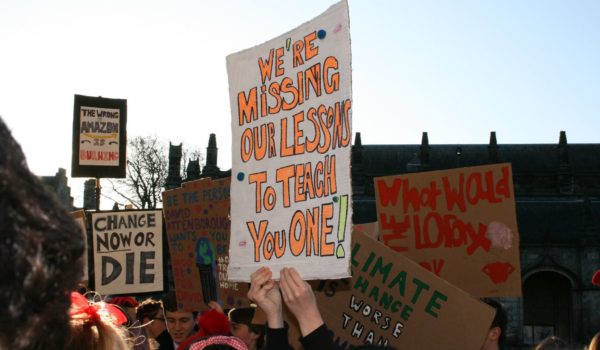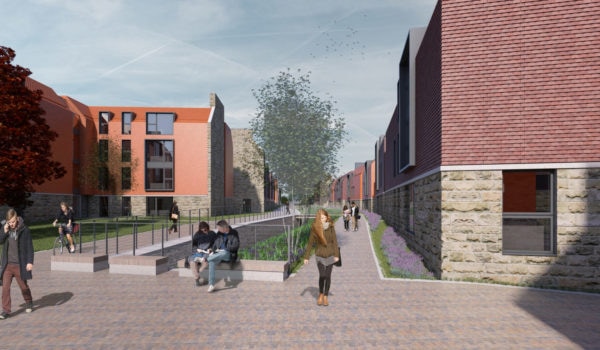To hear the ‘moderate’ response to the removal of the statue of Edward Colston, such as the view recently given by Keir Starmer, is to hear what best resembles a commentary of a tennis match. A point is served before some sort of ‘but’ is attached to the end as a return shot, helping to keep the argument within the parameters of ostensible moderation: Colston was not a good man, nor did he deserve a statue, but he was a complex individual; The toppling of the statue is not the fundamental issue, but the toppling is hubristic; The racism of colonial Europe must be condemned, but we cannot judge individuals by our own standards – they must be judged by the standards of their own society (which are to be condemned). My concern is that this approach fails to appreciate the valuable question of public space, which I seek to elaborate upon.
There is a certain type of statue of which I am particularly fond, and my home city of Liverpool is replete with them. They stand directly upon the ground, not on a plinth, in candid poses as if caught within the dragnet of the crowds. In Lime Street Station a rendering of Bessie Braddock, twenty-five years an MP and the first freewoman of the city, is cast mid-stride. Beside the Mersey, The Beatles appear to stroll and speak among themselves, hands in pockets or clutching coats. The statue of Edward Colston, however, was remarkably different: a hulking form, its plinth adorned with dolphins, and the wording of its plaque rather nauseatingly laudatory – the propagandising effect was indubitable. Rendering Colston as such may not have been done to intimidate, as in the proliferation of statues depicting Confederate Generals in the Southern United States at the height of Jim Crow, but to see no cleavage between Colston and his bronze tribute is oddly myopic.
The ‘moderate’ position seems to frequently struggle to separate Colston from his statue. Great lengths are taken to vindicate him from the judgment of the crowd who flung it into the river. Nevertheless, I would argue in favour of the productivity of direct physical removal, if taken as a comment upon the use of public space. Once a statue is unveiled, its sculptorial intent cannot be enforced from above. One can proclaim that a statue of Edward Colston celebrates his philanthropy, but the longer it remains exposed to scrutiny over its subject, the more its defenders must reckon with a simple question: ‘Who cares?’ As much as one may seek to sidestep this, the more one inadvertently touches upon unfortunate realities. Colston’s opinions were certainly more commonplace in his time, but very few individuals made tremendous wealth out of the slave trade. Thus, very few individuals were capable of bestowing tremendous wealth upon their home city. Capitalist exploitation is far larger than Colston, mutating into more complex forms in the present day, and in a similar vein ‘philanthropy’ continues to be concentrated in a small group of incredibly wealthy patrons. Bill Gates is viewed as a ‘good’ billionaire purely for his philanthropic ventures.
The clinging to notions of correct channels by which a statue can be taken down suggests a limited grasp of why such statues stay up. Donors to Oxford University are arguably the only significant bulwark against the removal of its statue to Cecil Rhodes. Considering the influence of Colston’s Society of Merchant Venturers in attempting to downplay his role in the slave trade on a planned commemorative plaque to be installed at the site of his statue only last year, is it reasonable to expect that the statue would come down at any point in the near future through such channels? As moneyed interests manage public space, a response which does little to counter them – proclaiming only that ‘this should not be here’ and continuing to seek ‘proper channels’ – has missed the point entirely. It appears that direct action does the job which Fabianism fails to accomplish.
What the removal of Colston’s statue attests to is a continuation of many of the conditions which permeated his time. Questions of historical absolutism fade into the background. The matter at hand is not so much about Colston himself as it is about a system which both enabled him to expand his wealth through the trade in human beings, and continues to propagandise his deeds through its claim upon public space. Does the ‘moderate’ position not consider public spaces as means of propaganda and thus, of implicit perpetuation of injustice? Does it forget the wider context of the protests which succeeded in bringing down the statue of Colston? We remain plagued by systemic racism, sexism, homophobia, transphobia, and ableism which allows swathes of privileged individuals to benefit at the expense of others, and yet the ‘moderate’ appears content to accept political channels as the solely acceptable recourse.
But why only Colston? Why not statues of those whose ‘nuanced’ opinions and influences appear to delay or preclude removal? I cannot give a satisfactory answer. Which statues are chosen and when is perhaps beyond comprehension, and it is impossible to predict when crowds will be sufficiently galvanised. Perhaps in a few years I will arrive in Lime Street, and nothing will remain of Braddock’s statue except for the marks it made upon the ground as it was dragged away to be flung into the Mersey – she did help to flood Capel Celyn to supply Liverpool with water. Perhaps I will pass the statue of the Beatles and one will be missing, having met a similar watery end. This is not to criticise the process – as much as I prefer this type of statue, they remain a form of propaganda. If protests against the Braddock statue reach a point of physical removal, I would be in total support. Reform emerging from below is an inevitably piecemeal process. Removing statues is not an end in itself, but a byproduct of reforming and reclaiming public space, as it would be a byproduct of substantively restructuring a sociopolitical system from above.









Comments